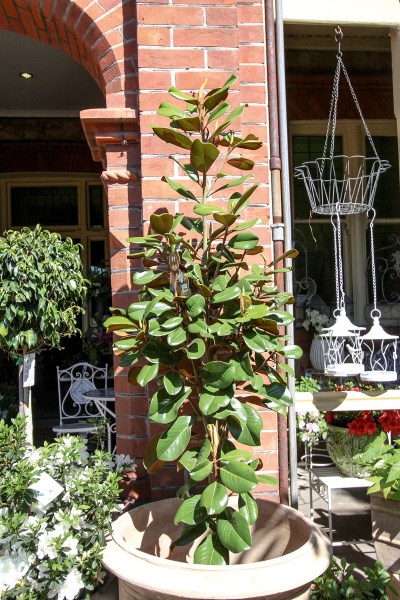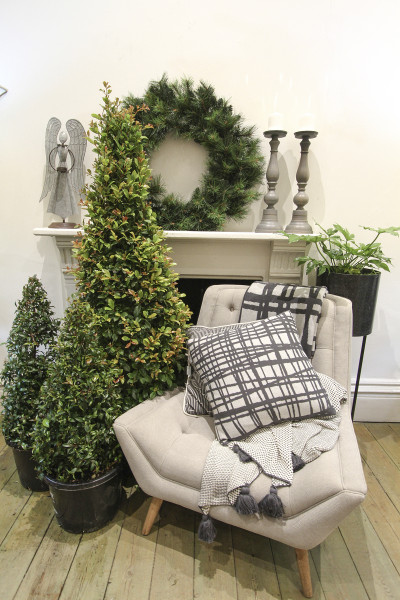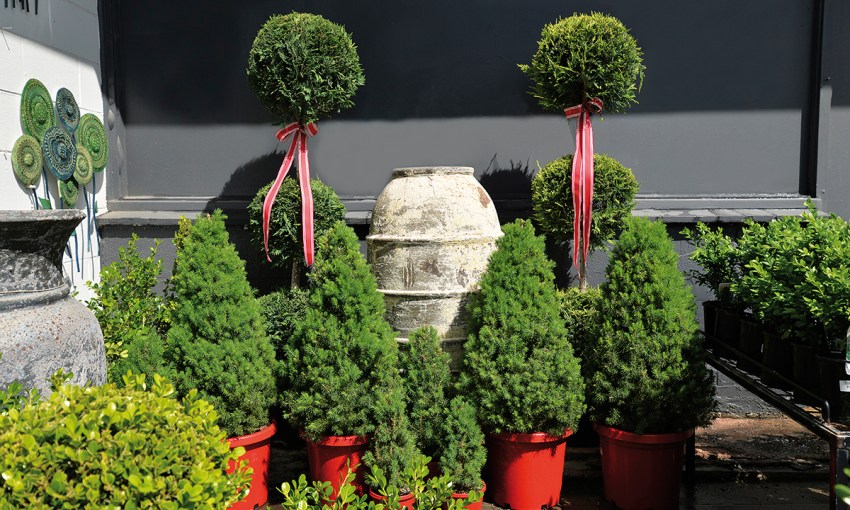As thoughts turn to Christmas decorations, lights and trees, Michael Keelan offers some tips for making sure your potted tree lasts the distance – and it doesn't have to be a traditional pine.
In the garden: A tree change for Christmas
The common choice for a live or cut trees, Pinus radiata (or Monterey pine) is generally sourced from one of the plantations in the Adelaide Hills, who also supply metropolitan outlets. In fact, this tree is the most widely planted pine in the world and has myriad uses, including flooring and pulp. It is a popular choice as a Christmas tree because of its naturally symmetrical shape which can also be pruned. With beautiful foliage and fragrance, and a relatively fast-growing habit, it’s the “go-to” Christmas tree for most homes.
But there are many more living trees that we could consider this year. Some may not be the conventional conical shape and familiar appearance, but with a little care and skilled decorating, they can add beauty and interest in your home this Christmas.
There are a few basic rules to care for potted living trees and plants used for this purpose, to ensure their survival from one year to the next. The trick is to keep them in good shape and presentation for 50 weeks of the year, ready to bring a bit of nature indoors to enjoy each Christmas.

Many living plants do not naturally flourish indoors for long periods, no matter how good the conditions are. Trees, and in particular those we can use as alternatives to Monterey pine, require a growing period out in the elements – sun, wind and rain – to keep them in a strong, healthy condition. The golden rule for the tree’s longevity is to keep them indoors for only a short time, and prepare them for their indoor stint well in advance of the time they are required.
Your local specialised nursery, such as Newmans Nursery, Vadoulis Garden Centre, Heynes, Norwood Garden Centre and Morgan Park, will have many suitable alternatives in stock. Ask their trained staff for cultural advice when making your choice as this will not be an inexpensive purchase. Ask about watering and feeding and where the tree should be placed in the garden for 50 weeks of the year.
Having chosen the plant, unless you have a suitable vehicle to take it home in, always get it delivered. The last thing you want is to snap the top off your tree or cause branch damage by trying to fit it in your car!
Once your treasure has arrived home and is in its preferred spot in the garden, hand water it every day leading up to its relocation indoors. Make sure that the potting mix is moist. Don’t water it on the day you plan to take it indoors, but allow it to drain.

Choose the lightest possible spot in your home to place your Christmas tree; the lighter the better, but avoid direct sun, especially through glass. Look for a position that would resemble the light levels under a pergola or verandah. Ensure that the pot is sitting in a large saucer or bucket to avoid leakage. Once indoors it may only require watering once a week, so don’t be tempted to overwater it. Simply poke your finger into the soil and if the top feels damp, it doesn’t require watering.
Plan to leave the tree indoors for a maximum of two to three weeks max. During this time the tree will be under enormous stress, so take it outside and place it in a position of filtered shade, water the soil and foliage well and leave it there for a week or two to fully recover. A couple of doses of a liquid fertiliser such as Seasol will be a big help in stabilising its condition.
When you are happy that the tree’s back to its old self, place it back in the same spot that was in before. Ideally, it should face the same direction. You can do this by marking the pot (with N for north for example) before moving it indoors and then put it back in the same position. After a week or two, lightly feed with a controlled release fertiliser, to ensure your plant’s health for next Christmas.
This story first appeared in the November 2017 issue of SALIFE magazine.



